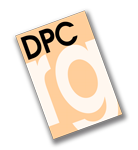El actual proceso peruano de descentralización política (2002-2016). (RI §417705)

The current peruvian political decentralization process (2002-2016) -
Johnny Zas Friz Burga
El artículo presenta el actual proceso peruano de descentralización política, iniciado en la última transición democrática. Hay una contextualización histórica que une la construcción estatal durante el Perú republicano y los distintos procesos de descentralización y de centralización clasificados en seis periodos. También es presentada la reforma constitucional en materia de descentralización, ocurrida el año 2002, como marco de todo el desarrollo normativo del actual proceso de descentralización. Hay un énfasis en los principios territoriales, en el principio de la autonomía territorial, en la distribución de las materias de competencia, en la caracterización del régimen territorial de los niveles descentralizados de gobierno, en la regionalización y en el carácter electivo de las autoridades regionales y locales.
I. MARCO HISTÓRICO. 1. La Descentralidad Estatal (1821-1844). 2. La Primera Centralidad Estatal con una Débil Descentralización (1845-1919). 3. La Consolidación de la Centralidad Estatal sin Descentralización (1919-1980). 4. El Proceso de Descentralización de la Constitución Política de 1979 (1980-1992). 5. La Recentralización Estatal (1992-2000). 6. El Proceso de Descentralización Política de la Última Transición Democrática (2000-2016).- II. MARCO CONSTITUCIONAL. 1. La Descentralización como Proceso Gradual. 2. Las Circunscripciones Territoriales. 3. La Regionalización. 4. La Autonomía y Estructura de los Gobiernos Regionales. 5. El Rol de los Gobiernos Regionales y sus Competencias y Recursos. 6.La Autonomía y Estructura de los Gobiernos Locales7. El Rol de los Gobiernos Locales y sus Competencias y Recursos.8. Otras Materias Relevantes. III. PRINCIPIOS TERRITORIALES Y FORMA DE ESTADO. 1. Los Principios en la Ley de Bases de la Descentralización. 2. Los Principios en la Ley Orgánica de Gobiernos Regionales. 3. El Rol del Tribunal Constitucional y el Principio de Unidad.- IV. Alcance del Principio de la Autonomía Territorial. 1. La Autonomía y la Ley de Bases de la Descentralización. 2. La Autonomía y el Tribunal Constitucional. V. NIVELES TERRITORIALES, ROLES Y DISTRIBUCIÓN DE MATERIAS DE COMPETENCIA. 1. Régimen de Competencias de los Gobiernos Regionales. 2. Régimen de Competencias de los Gobiernos Locales. VI. GENERALIZACIÓN Y UNIFORMIDAD DEL RÉGIMEN TERRITORIAL EN LOS NIVELES DE GOBIERNOS INTERMEDIO Y LOCAL. 1. Nivel de Gobierno Regional. 2. Nivel de Gobierno Local. -VII. NIVEL INTERMEDIO DE GOBIERNO Y TENDENCIAS A LA REGIONALIZACIÓN. -VIII. CARÁCTER ELECTIVO DE LAS AUTORIDADES TERRITORIALES. 1. Nivel de Gobierno Regional. 2. Nivel de Gobierno Local.- IX. AVANCES, RETROCESOS Y TENDENCIAS: ENTRE LA CONSOLIDACIÓN DE LA DESCENTRALIZACIÓN Y LA RECENTRALIZACIÓN ESTATAL.
This paper presents the current Peruvian political decentralization process initiated in the last democratic transition. There is a historical contextualization linking state building during the Republican Peru and the various processes of decentralization and centralization classified into six periods. Also it presents the constitutional reform on decentralization, which occurred in 2002, as part of the whole regulatory development of the current process of decentralization. There is an emphasis on territorial principles, on the principle of territorial autonomy, on the distribution of powers, on the characterizing the territorial system of decentralized levels of government, on regionalization and on the elective character of regional and local authorities.
I .HISTORICAL FRAMEWORK. 1. Absence of Centrality (1821-1844). 2. The First State Centrality with a weak Decentralization (1845-1919). 3. Consolidation of State Centrality without Decentralization (1919-1980). 4. The Process of Decentralization of the 1979 Constitution (1980-1992). 5. The State Recentralization (1992-2000). 6. The Decentralization of the Last Democratic Transition (2000-2016). – II. CONSTITUTIONAL FRAMEWORK. 1. Decentralization as a Gradual Process. 2. Territorial Constituencies. 3. The Regionalization. 4. Autonomy and Structure of the Regional Governments. 5. Role of Regional Governments and their powers and resources. 6. Autonomy and Structure of the Local Governments.7. The Role of Local Governments and their powers and resources. 8. Other Matters Relevant.- III. TERRITORIAL PRINCIPLES AND FORM OF STATE. 1. Principles in the Framework Law of Decentralization. 2. Principles in the Organic Law of Regional Governments.3. The Role of the Constitutional Court and the Principle of Unity.- IV. SCOPE OF THE PRINCIPLE OF TERRITORIAL AUTONOMY. 1. The autonomy and the Framework Law of Decentralization. 2. The autonomy and the Constitutional Court. -V. Territorial Levels, Roles and Distribution of Powers. 1. Powers of Regional Governments. 2. Powers of Local Governments.- VI. GENERALIZATION AND UNIFORMITY OF THE TERRITORIAL REGIME IN REGIONAL AND LOCAL GOVERNMENTS. 1. Regional Level. 2.Local Level.- VII. THE INTERMEDIATE LEVEL OF GOVERNMENT AND THE REGIONALIZATION TRENDS. VIII. ELECTIVE CHARACTER OF THE TERRITORIAL AUTHORITIES. 1. Regional Level. 2. Local Level.- IX. PROGRESS, SETBACKS AND TRENDS: AMONG THE CONSOLIDATION OF THE DECENTRALIZATION AND THE STATE RECENTRALIZATION.
Documento disponible para usuarios registrados.
Para consultar gratuitamente este artículo primero deberá registrarse como usuario.
